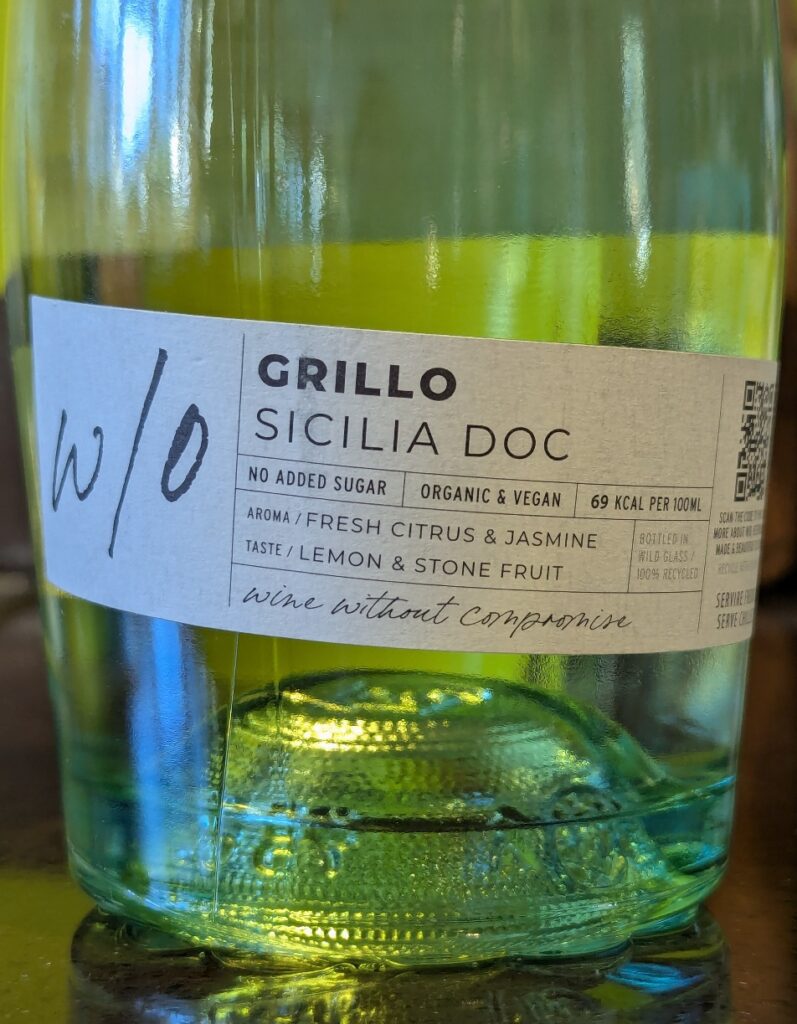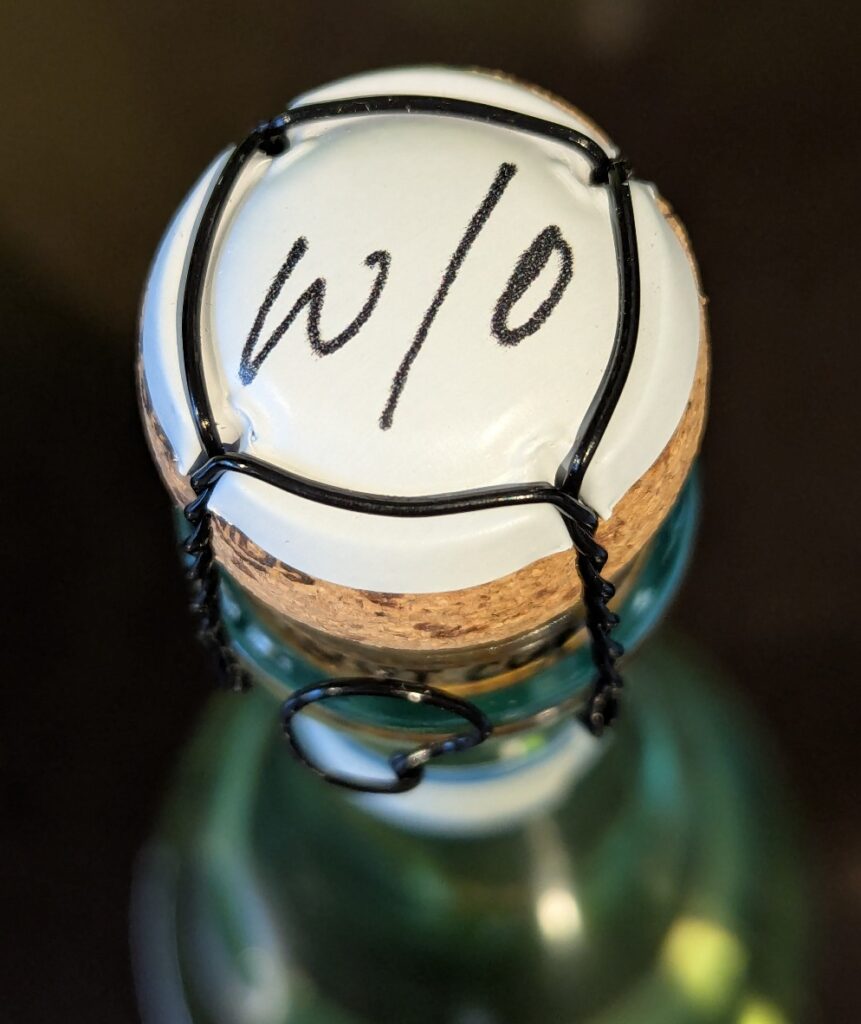
From Sicily comes a new project from winemaker Dino Taschetta: w/o – meaning a wine made without compromise. This sparkling wine is made from the indigenous Grillo grape believed to be a cross between Cataratto and Zibibbo (Muscat of Alexandria). Grillo is a versatile grape capable of producing both still and sparkling wines. In this case, it’s been used to create a sparkling wine made using the Charmat method, the same process used for Prosecco.
The 2023 vintage sits at a relatively light 11% ABV and is bottled in a UK first, 100% recycled ‘wild’ glass, giving it a sustainable edge. It’s sealed with a nude cork, and the wine is organic, vegan and is low intervention.
Unusually, I found this wine showed best when served cold, straight from the fridge. It has a subtle green tint and small, plentiful bubbles that give it a lively, refreshing character. Though labelled ‘Extra Dry’, this actually means slightly sweet, a strange and confusing quirk of sparkling wine labelling.
Aromas of apple and citrus rise from the glass, while on the taste it brings flavours of jasmine, lime and sherbet, the sherbet note coming through clearly thanks to the effervescence and vibrant acidity. Unlike Prosecco, which leans more towards pear notes, it offers a floral lift, with a touch of apricot emerging when tasted on the sides of the tongue. It’s got a long, lingering finish, much more persistent than your average Prosecco and overall feels like a clear step up in both complexity and character. The flavours hold up brilliantly even when very cold, making it refreshing. Its greater intensity and body also mean it pairs well with food, try it with pizza, spaghetti al pomodoro or classic Sicilian arancini.
When allowed to warm slightly in the glass, after about 20 minutes, it reveals more sweetness and a delicate hint of almond, though I personally prefer it served very cool. Still, if you’re after sweetness, serving it a little warmer does the trick.
Available from Laithwaites for £11.49, it’s a vibrant, sustainable and different take on sparkling wine.














